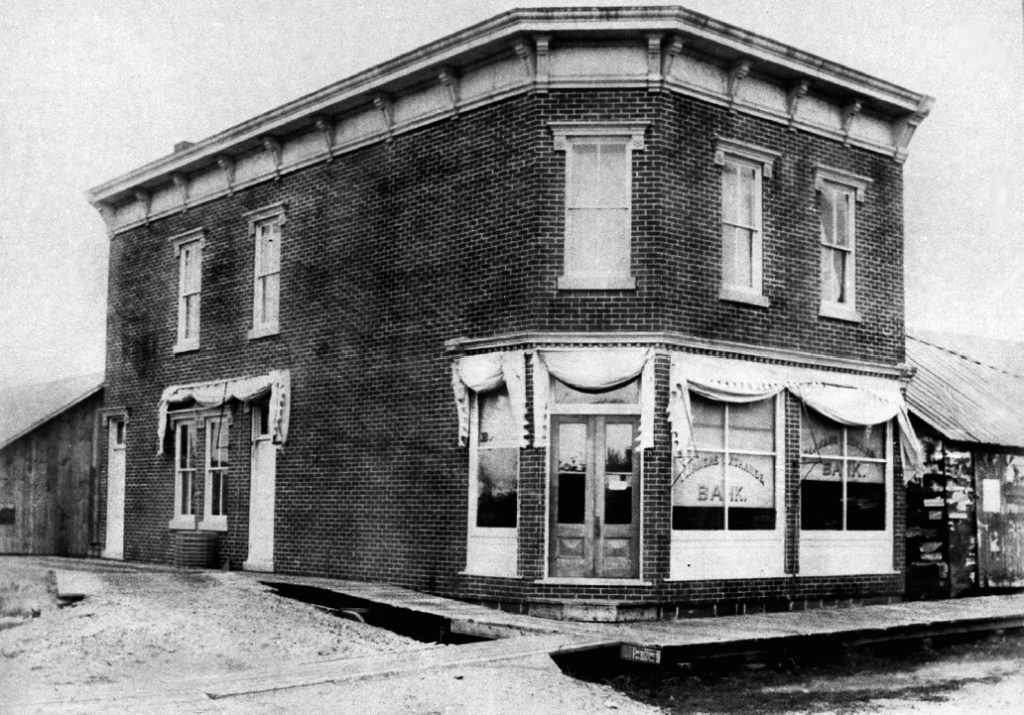
SRHS
Steamboat Rock Historical Society
TIMES ARE CHANGING
BANKING

One of the longest running businesses in Steamboat Rock, the Farmers Exchange Bank moved into this building around 1870.
Steamboat Rock’s first bank opened it’s doors in the late 1860’s and was incorporated as the Farmers Exchange bank on February 3, 1871. Though the name and owners have changed a number of times over the years it long remained oldest business in Steamboat Rock. This bank was located in a building east of the present bank approximately across the street from where the Green Door is today. That building had been built around 1964, but it’s original use is not known.
It is thought that the bank was then moved into the present building about 1870. The old building was torn down in 1916 to make room for a new building for the Potgeter lumber business.
The original stockholders for the bank were A. A. Noyes, D.W. Turner, P.K. Hayden, and J. H. Frisbie. The bank had a capital of $30,000 divided into $500 shares.
Ash Noyes was the first bank president. Noyes, was involved in many early businesses in Steamboat Rock,
including the grain business, cattle business, and manufacturing to mention a few.
In the 1880’s the name Ash Noyes became linked with a band of counterfeiters that were operating within the county. It is thought that he as president of the bank facilitated the passing of the counterfeit money. Noyes was never charged with any of this activity, but later when he left the area for Colorado, it was rumored that he
feared being exposed.
D.W. Turner, was the first cashier. Turner later became president of the bank, and remained until his death in 1932. For many years prior to and after his death, the bank was referred to as the “Turner Bank”. Both of Turner’s children would follow their father as bank president.
The two directors of the bank were P. K. Hayden and F. H. Robertson.
In 1874, a second bank was opened in Steamboat Rock known as the Citizens Bank and headed by Cartwright, Lathrop & Co. Bankers.
The new bank boasted to have a safe weighing 6000 pounds that was the best manufactured in this country. A year later the Reform Herald noted that, “The Exchange Bank has a new safe.” I guess competition was at work even back then.
D. B. Cartwright was president, and R.H. Waite, cashier. Mr. Waite was later succeeded by Wellington Cartwright as cashier who in turn was succeeded by Frank Snook and then J.C. Root.
The bank closed six years later in 1880, when Cartwright died.
© 2020 Steamboat Rock Historical Society | All Rights Reserved
Powered by Hawth Productions, LLC